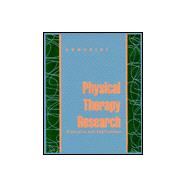
| SECTION ONE RESEARCH FUNDAMENTALS | |||||
|
3 | (11) | |||
|
3 | (2) | |||
|
5 | (1) | |||
|
5 | (2) | |||
|
7 | (2) | |||
|
9 | (1) | |||
|
10 | (4) | |||
|
14 | (14) | |||
|
14 | (5) | |||
|
19 | (5) | |||
|
24 | (4) | |||
|
28 | (13) | |||
|
28 | (2) | |||
|
30 | (2) | |||
|
32 | (1) | |||
|
33 | (2) | |||
|
35 | (6) | |||
| SECTION TWO RESEARCH DESIGN | |||||
|
41 | (10) | |||
|
41 | (8) | |||
|
49 | (2) | |||
|
51 | (23) | |||
|
51 | (6) | |||
|
57 | (5) | |||
|
62 | (4) | |||
|
66 | (8) | |||
|
74 | (12) | |||
|
75 | (3) | |||
|
78 | (3) | |||
|
81 | (5) | |||
|
86 | (19) | |||
|
87 | (11) | |||
|
98 | (3) | |||
|
101 | (2) | |||
|
103 | (2) | |||
|
105 | (16) | |||
|
105 | (1) | |||
|
106 | (1) | |||
|
107 | (6) | |||
|
113 | (1) | |||
|
114 | (4) | |||
|
118 | (3) | |||
|
121 | (22) | |||
|
122 | (4) | |||
|
126 | (6) | |||
|
132 | (6) | |||
|
138 | (5) | |||
| SECTION THREE MEASUREMENT | |||||
|
143 | (19) | |||
|
143 | (1) | |||
|
144 | (3) | |||
|
147 | (1) | |||
|
147 | (5) | |||
|
152 | (1) | |||
|
153 | (4) | |||
|
157 | (5) | |||
|
162 | (10) | |||
|
162 | (6) | |||
|
168 | (4) | |||
|
172 | (29) | |||
|
173 | (5) | |||
|
178 | (2) | |||
|
180 | (3) | |||
|
183 | (1) | |||
|
184 | (1) | |||
|
184 | (2) | |||
|
186 | (2) | |||
|
188 | (1) | |||
|
189 | (1) | |||
|
189 | (1) | |||
|
189 | (1) | |||
|
190 | (11) | |||
| SECTION FOUR DATA ANALYSIS | |||||
|
201 | (26) | |||
|
202 | (1) | |||
|
202 | (4) | |||
|
206 | (1) | |||
|
207 | (3) | |||
|
210 | (3) | |||
|
213 | (2) | |||
|
215 | (5) | |||
|
220 | (3) | |||
|
223 | (1) | |||
|
224 | (3) | |||
|
227 | (41) | |||
|
227 | (2) | |||
|
229 | (2) | |||
|
231 | (1) | |||
|
232 | (36) | |||
|
268 | (31) | |||
|
268 | (9) | |||
|
277 | (3) | |||
|
280 | (3) | |||
|
283 | (7) | |||
|
290 | (9) | |||
| SECTION FIVE BEING RESEARCH CONSUMER | |||||
|
299 | (11) | |||
|
299 | (1) | |||
|
300 | (1) | |||
|
300 | (6) | |||
|
306 | (2) | |||
|
308 | (2) | |||
|
310 | (17) | |||
|
310 | (1) | |||
|
311 | (1) | |||
|
311 | (9) | |||
|
320 | (7) | |||
| SECTION SIX IMPLEMENTING RESEARCH | |||||
|
327 | (14) | |||
|
327 | (5) | |||
|
332 | (4) | |||
|
336 | (5) | |||
|
341 | (18) | |||
|
341 | (6) | |||
|
347 | (4) | |||
|
351 | (5) | |||
|
356 | (3) | |||
|
359 | (12) | |||
|
359 | (5) | |||
|
364 | (7) | |||
| APPENDIX A Integrity in Physical Therapy Research | 371 | (4) | |||
| APPENDIX B Random Numbers Table | 375 | (6) | |||
| APPENDIX C Table: Areas in One Tail of the Standard Normal Curve | 381 | (2) | |||
| APPENDIX D Questions for Evaluating a Research Article | 383 | (6) | |||
| APPENDIX E Guidelines for Preparing a Journal Article Manuscript | 389 | (6) | |||
| APPENDIX F Sample Manuscript for Hypothetical Study | 395 | (20) | |||
| APPENDIX G Sample Platform Presentation Script with Slides | 415 | (10) | |||
| Glossary | 425 | (10) | |||
| Index | 435 |
The New copy of this book will include any supplemental materials advertised. Please check the title of the book to determine if it should include any access cards, study guides, lab manuals, CDs, etc.
The Used, Rental and eBook copies of this book are not guaranteed to include any supplemental materials. Typically, only the book itself is included. This is true even if the title states it includes any access cards, study guides, lab manuals, CDs, etc.